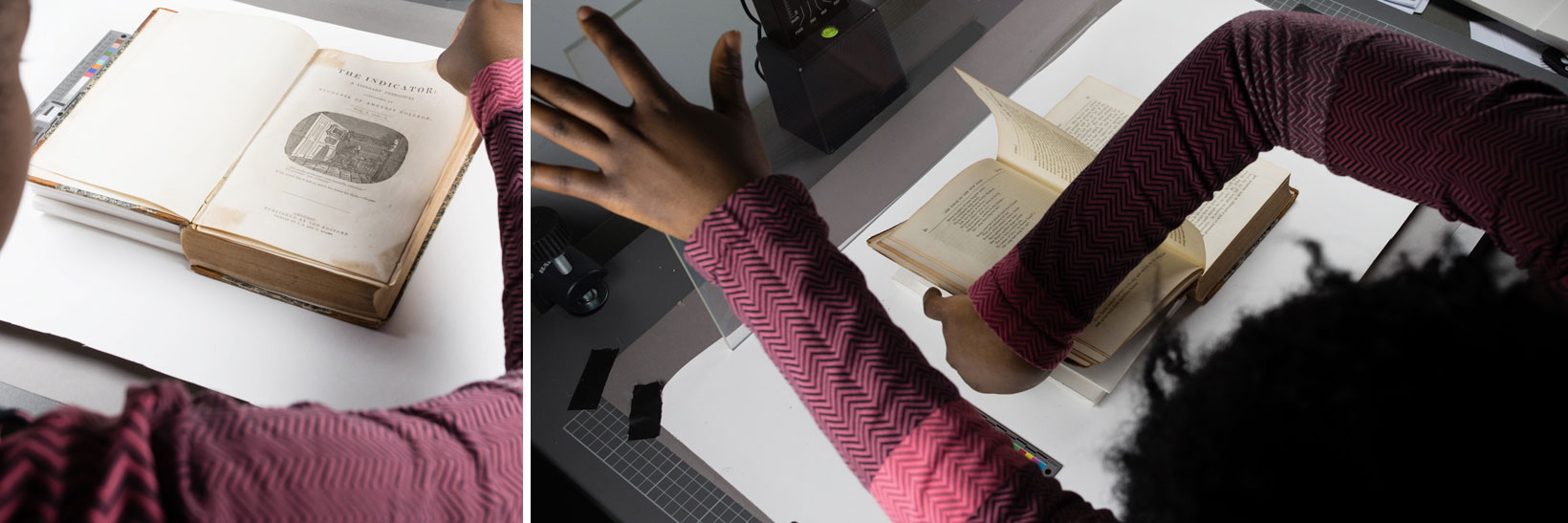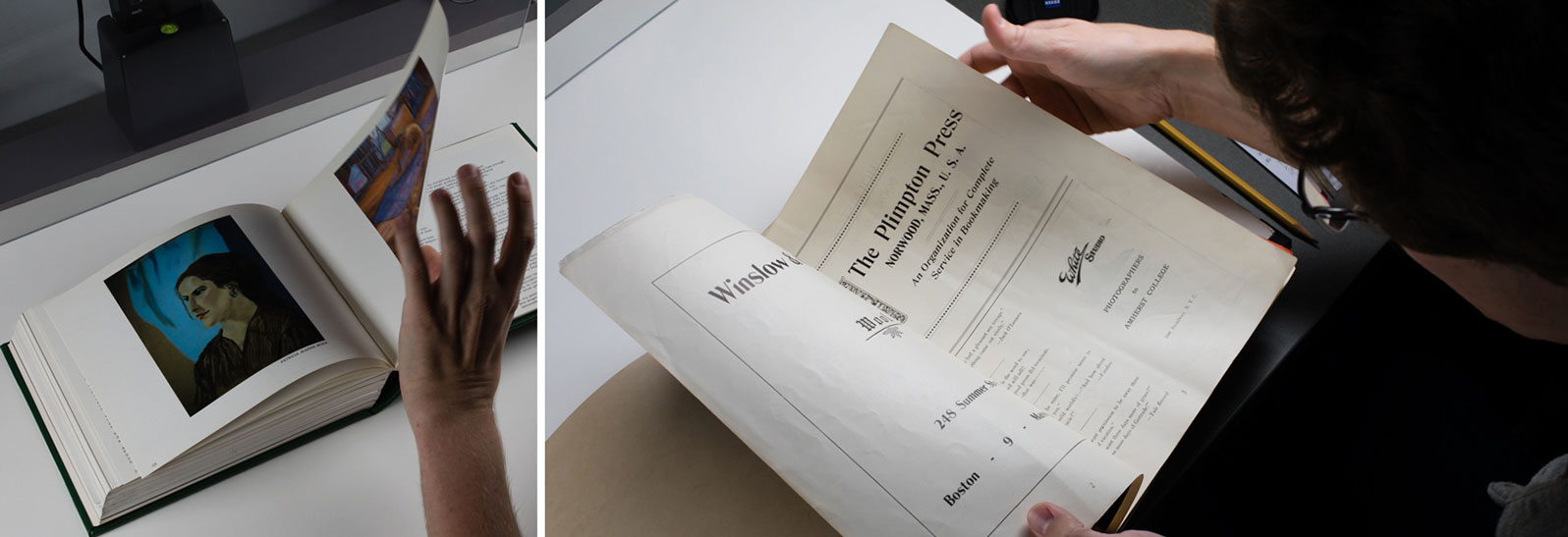The library has hired two new people for this bicentennial project: metadata manager Amanda Wise Pizzollo and archivist Jennifer Bolmarcich. Bolmarcich's job is to prepare archival material for digitization, while Pizzollo is working with metadata management librarian Kate Gerrity on creating search terms that researchers can use to more easily locate specific records and artifacts.
The goal is to provide an easily searchable database accessible to the public.
“So if someone's saying, ‘I was on the basketball team in 1972,’ they should be able to type in ‘basketball 1972’ and pull up something,” says Michael Kelly, head of Archives and Special Collections. “There's a real academic audience, but we're really thinking more in terms of the large popular audience.”
Much material is already up, including old yearbooks, course catalogs and manuscripts. They are available at acdc.amherst.edu.
“The material that's already up is really rich,” said Kelly. “We are simply putting a ton of raw material up in as useful a way as possible.”
Collections that will be digitized include:
- Curriculum reports
- Commencement programs
- Society of Alumni minutes
- Trustees minutes
- More than 300,000 negatives from the college photographer, taken between 1960 and 2005
With so much material and limited time before the bicentennial, the library team is now working to set priorities, anticipating which materials will be of greatest interest. “Value plays a big part in it, whether it's research value, or alumni wanting to see pictures of themselves, any way that we can make people feel a part of the College,” says Pizzollo.
There are a few limits to what can be made available. Certain records, such as trustee and faculty meeting notes, are protected by a 50-year embargo, for example. And the Olio used to publish graduates’ home addresses: those will be redacted. Published works made before 1923 are considered public domain. Works published after 1923 are subject to questions of copyright; if the copyright holder can’t be found, they may have to hold off on scanning the work.
Some of the more colorful documents include disciplinary letters from the 1830s for infractions such as drinking cherry rum, playing cards or in one case, “parading in a frock.”
The project is intended to not to replace visits to the Archives but to expand upon them. The library team expects that Archives will remain a popular destination for all kinds of researchers—including not only historians but also alumni who want to show off their theses to grown children.



